
-
Testing it out
Testing out the new trains & layout ideas with a temporary layout on the pool table. I have since adjusted this so that the lowest siding is slightly shorter and the top one slightly longer.
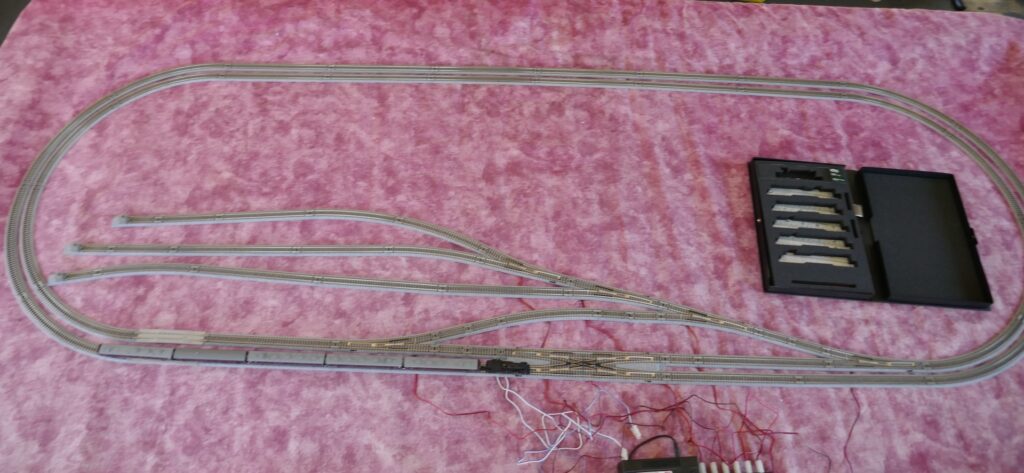
The first of the trains I currently have is a C11 steam locomotive 2-6-4T with 5 passenger cars ‘SL Fuyu-no-Shitsugen Train’ or Winter Wetlands train.

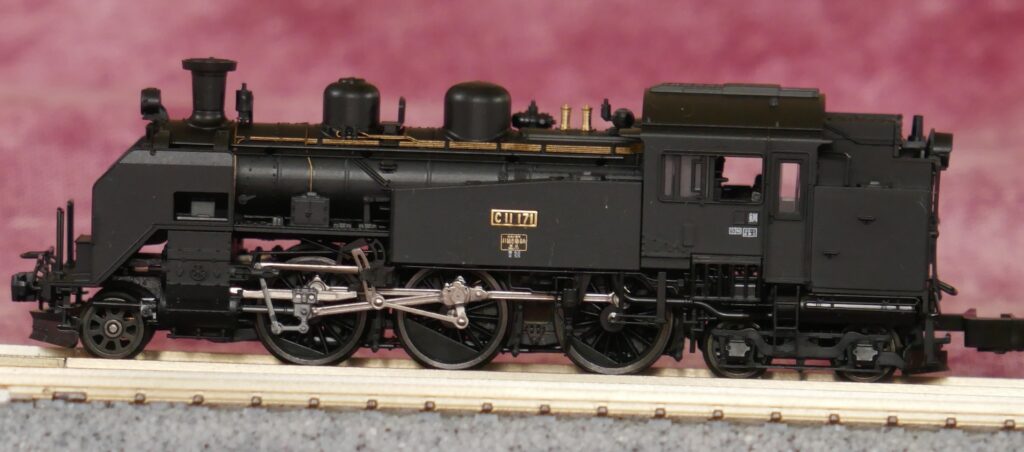
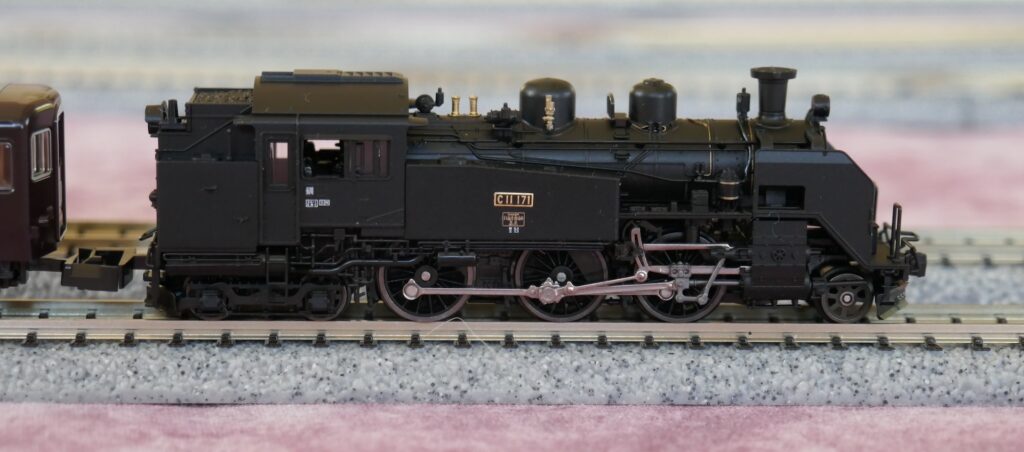
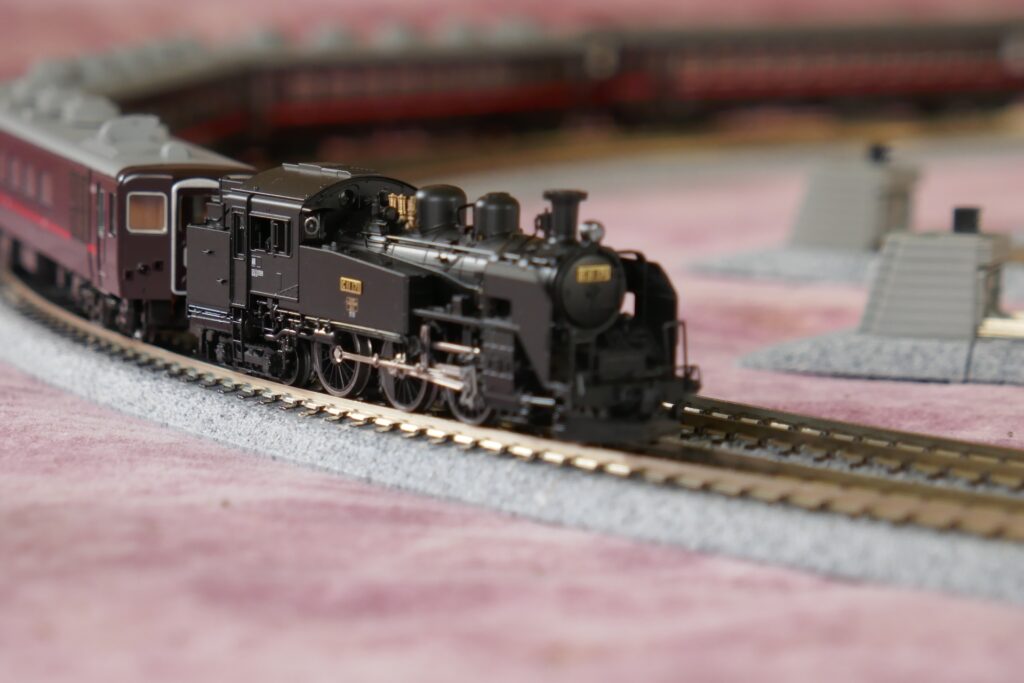





The second train is a C12 steam locomotive 2-6-2T with 2 Wamu90000 cars, 2 Tumu1000 cars and 1 Yo3500 car.

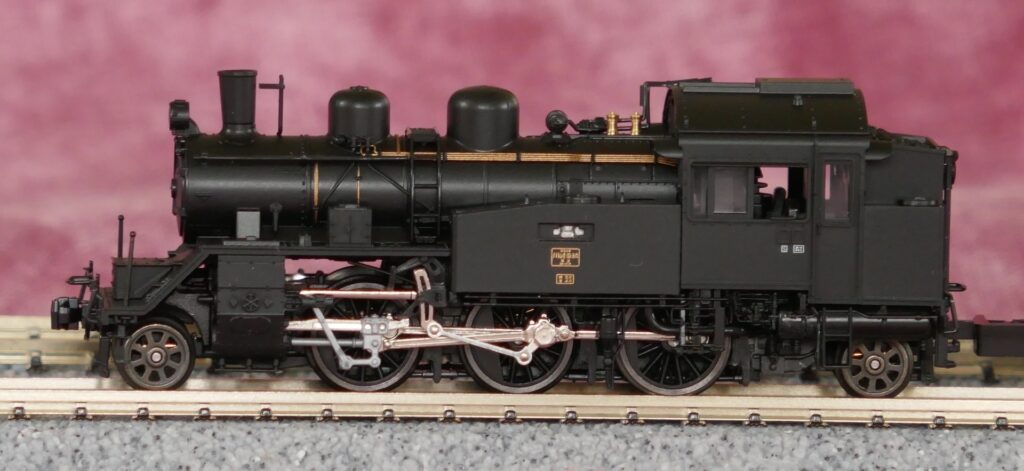
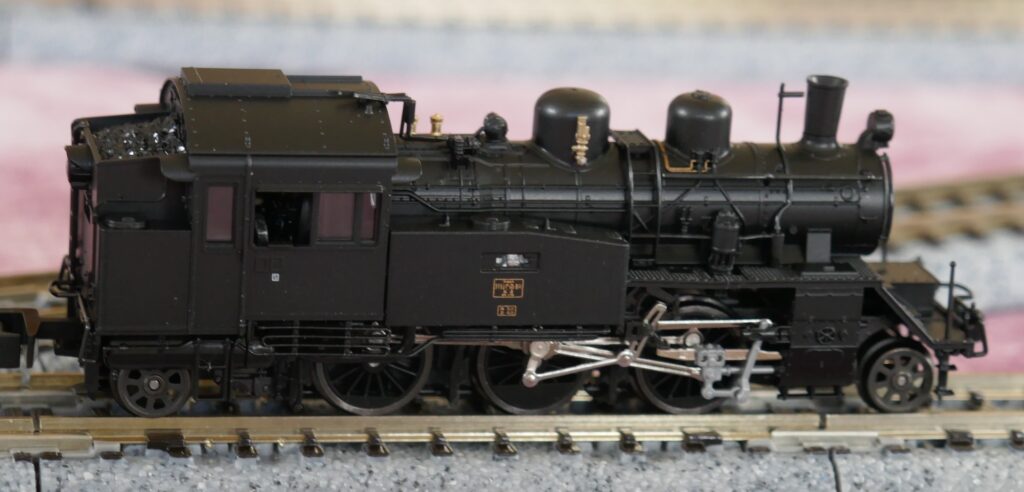
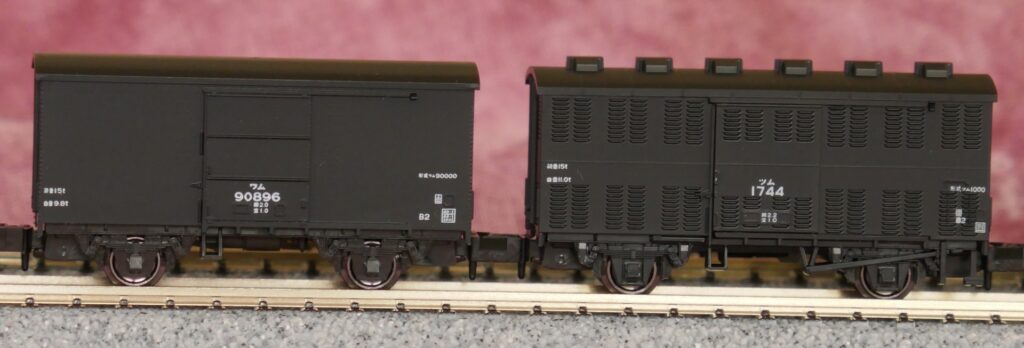

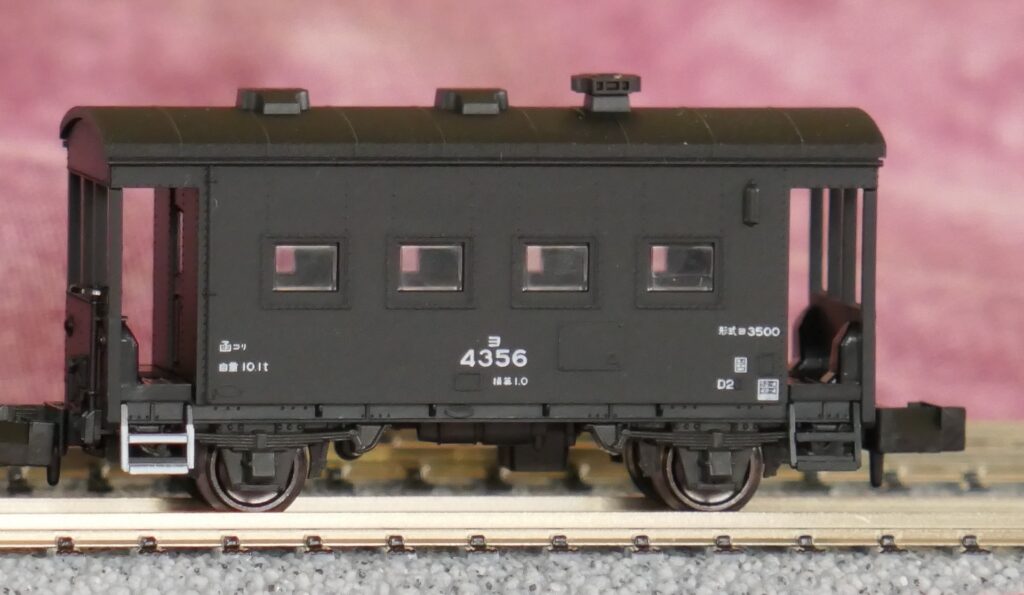
They run very nicely but having them in my hand really points out how incredibly small this scale is so my clumsy fingers may struggle with some of the finer scenery items or for putting the number plates on the C12 locomotive.
-
Gauge and Scale
Gauge and scale can become complex when looking at model railway with only some countries being represented properly. I am going with N gauge which is 9mm track and for standard gauge (1435 mm) is close to 1:160 (about 1:159.4).
For various reasons including the size of the trains (loading gauge) being smaller and the motors at the time of the establishment of the model scales being too large to fit British trains went off scale and went 1:76 rather than 1:87 in HO and called it OO and in N scale went with 1:148.
Japan, where my first couple of locomotives are from, went with 1:150 for their standard trains which run on narrow gauge (1067mm) and 1:160 for their Shinkansen high speed lines which run on standard gauge. I think they model mainly in 1:150 and just accept the different scale of the bullet trains. However 1:150 does not represent the size of their narrow gauge track. 1:150 comes out at 1350mm which is nowhere close to 1067mm so it isn’t true to scale. TT-9 scale which uses N gauge track (9mm) is far more to scale at 1:120 (works out to 1:118.6). That would be a far more accurate representation but it hasn’t been widely adopted so is one of the many specialist scales.
Australia, which has a limited but gradually improving availability of stock seems to go with 1:160. That works absolutely fine for NSW, NT, SA, WA and the national lines in Victoria but is way off for Queensland & Tasmania (1067mm) and Victoria (2309mm). There are probably some small specialist scales to more accurately represent Australian narrow and broad gauge trains.
I’m not sure how companies deal with off scale but I assume they make the height and length of the locos and rolling stock correct to scale and have the error in the width of the locomotive. Given Victorian trains are over twice as wide as Queensland and Tassie trains I think you would lose that sense of size and proportion.
I briefly considered OO9 which is 1:76 on 9mm track (there is an equivalent for HO on 9mm track) but the range is limited and expensive and it represents really narrow track 684mm which is mainly old slate, coal or similar industrial lines and with the exception of heritage lines would mean modelling for not much later than 1930s.
I think my choice will be between 1:148 and 1:150. For me I think most things would not be overly dissonant at those differences (1-1.5% difference) whereas putting 1:148 or 1:150 against 1:160 might be (8-9%). For someone 170cm tall (about 5’7″) it would be 11.5mm at 1:148, 11.3mm at 1:150 and 10.6mm at 1:160 and for a building or structure 5m tall it would be 33.8, 33.3 & 31.3.

As can be seen from this mock-up there is minimal visual difference between 1:148 and 1:150 but a fairly obvious difference to 1:160. So I think that confirms that within the one layout I am happy to mix 1:148 and 1:150 but not 1:160. So no Australian trains for me (or American but I’m not overly interested in American models).
-
Start of model railway
I have decided to try building a fairly simple model railway in N Scale – probably either 1:150 or 1:148 scale. I have some track and a couple of locomotives ordered and have started some preliminary track layouts.
I don’t have a name for it as yet though I am thinking it may just be Hamlel. It will be fictional and in a small rural location set in a pre-1970s time period as locomotives will be steam. General feel of location will be United Kingdom but no specific place is being modelled. The locomotives and rolling stock I have at the moment are Japanese but I will either ignore the discrepancy as being a fictional location that obtained second hand train stock from Japan but hadn’t refinished them or possibly weather or mask any Japanese script on the train.
I’ve tossed up between a door style layout – maybe slightly larger than a door or doing a layout across the full width of the pool room (4.7m). The door style layout is potentially portable while the full width would not be.


I think I will try the first of these layouts. Although it doesn’t give anything like the same length of running it will be portable, has plenty of room for scenery and has a combination of continuous running and shunting. Most of the back of the loop would be hidden with a possible thought of an exposed section for a viaduct.
Initial inspirations are Wrenton for the general feel and style and Chandwell for the construction techniques.